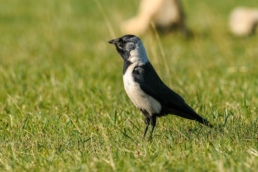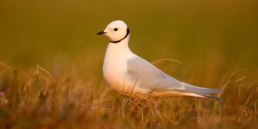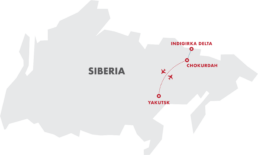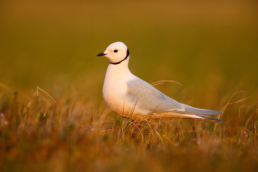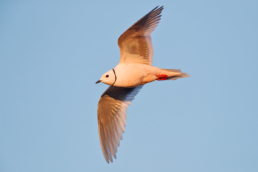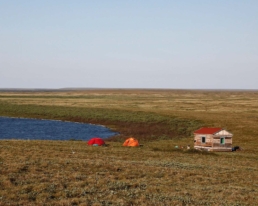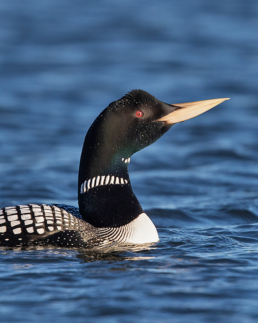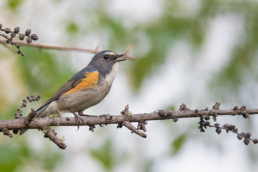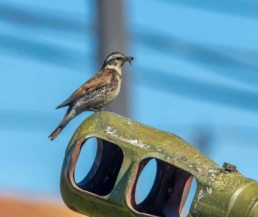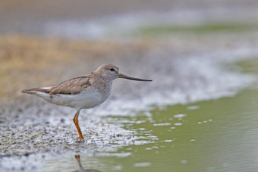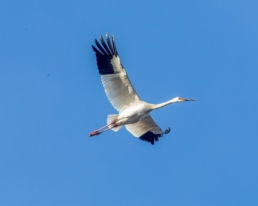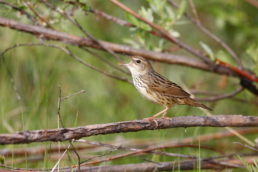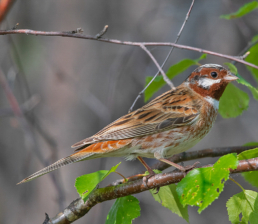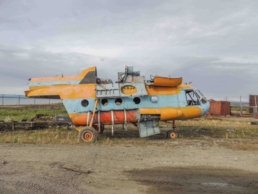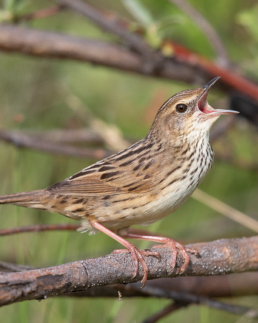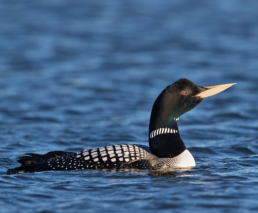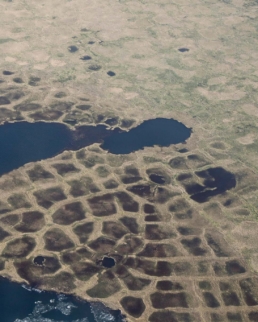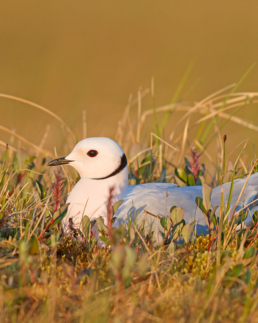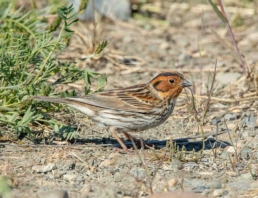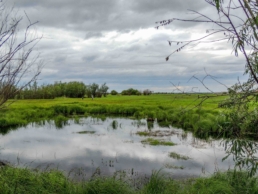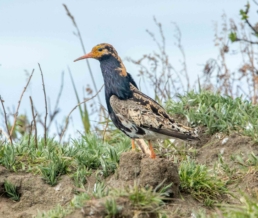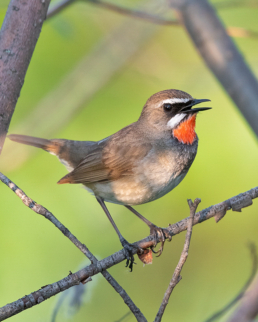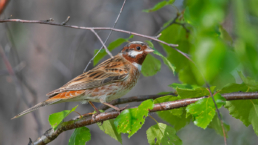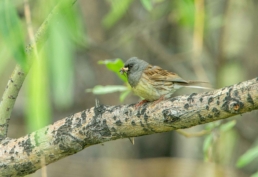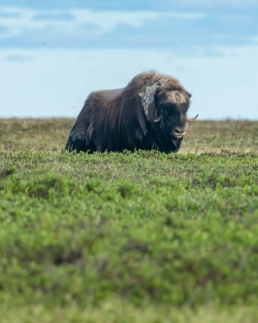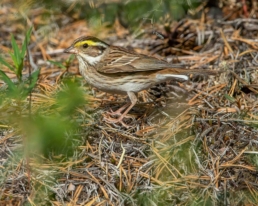Your Russia itinerary
Days 1 - 2: Arrival in Yakutsk
Clients depart from home, heading towards the most significant city on the Lena River, Yakutsk. The town is located just 450 km south of the Arctic Circle. Clients need to be in Yakutsk before June 18 – 1800h! A welcome meeting is scheduled for this time, followed by dinner. For those wishing to arrive earlier, please contact the RBT office, and we will gladly assist with additional hotel bookings.
Night: Day 0 on aircraft
Day 3: Yakutsk to Chokurdah
Depending on the available flight schedule, we will depart from our hotel at noon for the Yakutsk Domestic Airport for our flight aboard a small aircraft to the far north. Chokurdah is located 1300 km northeast of Yakutsk, on the shores of the Indigirka River, close to the East Siberian Sea. Here we will be far from civilization! This little town is disconnected from the outside world by road for most of the year. It is only in the winter, when the tundra freezes over, that the village becomes accessible by ‘road’. After some paperwork, we will head for our accommodations for our first night in this northern outpost. Within walking distance of our hotel, we will be able to find some lovely birds like Dusky Thrush (very common), Siberian Accentor, Pallas’s Bunting, and Vega Herring Gull.
Night: Basic hotel/apartment in Chokurdah
Days 4 - 11: Birding Indigirka River for Ross's Gull & Siberian Crane
For the next seven days, we will explore the Indigirka River Delta from our private camp near a self-built ornithological station. Our forays into the surrounding area will be on foot and by boat. Numerous exquisite species call this tundra home, and we will be on the hunt for some of the best examples. The remoteness of this location and lack of hunting here has a noticeably positive effect on the birds. Most of the birds here are not used to being around humans; meaning many are easily approachable. Of course, our primary reason for visiting these untouched lands is the nearby breeding colonies of Ross’s Gull – within walking distance of our tented camp! This gorgeous little gull only breeds in isolated regions of northern Greenland and, here, in arctic Russia. We will spend much time studying and photographing these magnificent creatures. Another top bird found here is the critically endangered Siberian Crane – the rarest member of the crane family. These elegant snow-white birds are veritably common around our tented camp to have been a daily fixture on previous trips to the region.
On and around the many small lakes, we will find many beautiful species, including a trio of eiders – Spectacled, King, and Steller’s. All three species are very desirable and occur only in remote parts of the arctic. Here we can also come across Baikal Teal, Long-tailed Duck, White-winged Scoter, and Sandhill Cranes, all commonly found in the vicinity. This area is attractive for no less than four species of diver; Red-throated, Arctic, Pacific, and the enormous Yellow-billed Diver. The latter is a crucial target for many. Our team has constructed a small hide near the lake where this enigmatic species breeds. Massive amounts of waders breed in the Arctic, using the never-ending summer days to raise their young. In full summer plumage, we may find the fantastic Pacific Golden Plover, Sharp-tailed Sandpiper, Pectoral Sandpiper, Ruff, and Long-billed Dowitchers. The skies here are full of predators looking for an easy meal – Arctic Jaeger, Pomarine Skua, and Long-tailed Jaeger are all notable. The birdlife here is amazingly plentiful, other commonly observed species include Red-throated Pipit, Little Bunting, Eastern Yellow Wagtail, and Lapland Longspur. On the last day, we motor back to the tiny city of Chokurdah, by boat, where more Dusky Thrush will undoubtedly be waiting.
Night: Basic tented camp
Day 12: Birding Chokurdah
Today our schedule involves a tour of the region surrounding the village with new additions likely. Some of the species here that we may have not already encountered include the Wood Sandpiper, East-Siberian Wagtail race ‘ocularis,’ Glaucus Gull, Redpoll, and Bean Goose. We will spend one last evening at Chokurdah’s only hotel!
Night: Basic hotel/apartment in Chokurdah.
Day 13: Flight to Yakutsk
This morning we will board our flight back to civilization after an extraordinary experience in the Russian tundra. In the evening we can enjoy a feast in one of the many excellent restaurants in Yakutsk. This feast will go together, for those who are interested, with a shot of good Russian Vodka! A fitting toast to our Arctic adventure.
Night: Comfortable tourist hotel in Yakutsk
Days 14 - 16: Forest birding around Yakutsk & visit to the Lena River
Our final days of birding around Yakutsk will be at one of the ornithological stations in the forest west of the city. On our way, we can stop at various lakes where White-winged Terns will prove plentiful. Eurasian Hobbies will be hunting for dragonflies while Black-eared Kites patrol the roads for roadkill. In the forest, we will search for ‘brevirostris’ Great Spotted Woodpecker, while the songs of Pine- and Black-faced Buntings echo in the background. The rarest catch of the day could be the critically endangered Yellow-breasted Bunting. This brightly-coloured, attractive bunting has a peculiar call which proves the best way of finding it. They are usually found atop small willow bushes.
We will continue exploring the area around Yakutsk with an excursion to the taiga forests along the Lena River. In this gorgeous transitional habitat, new birds will quickly appear, with gems such as Siberian Rubythroat, Brown Shrike, and Oriental Cuckoo all breeding here. We will do our best to show you the lovely Rustic Bunting, Red-flanked Bluetail, and hopefully the appealing Yellow-browed Bunting. Above the forest, vast swirling flocks of Pacific Swifts often disguise the odd Eastern Buzzard. In marshes near the Lena river, Lanceolated and Pallas’s Grasshopper Warblers are common and will be heard singing their respective songs. Perched alongside the road, we may find attractive Japanese Stonechat or the ‘stejnegeri’ race of Common Stonechat, while Naumann’s Thrushes forage nearby in the grassy meadows.
In the evening, we return to our hotel to get ready for the flight back home. Naturally, we will enjoy a wonderful dinner in the evening to celebrate this once-in-a-lifetime adventure!
Night: Comfortable tourist hotel, Yakutsk
Day 17: Yakutsk to home
Everyone will have a day room until 11 am in our tourist hotel in Yakutsk prior to the airport transfer.
Tour information
Focus
- Exclusive Birds
- Arctic Mammals
- Vast Tundra
Group size
Min 4 - Max 7
The group will be always led by one birding leader and one assistant.
What's included in the Price?
All transport. All accommodations in twin rooming or tented camp. The domestic return flight between Yakutsk and Chokurdah. All meals. All permits and national park entrances. Please note: Drinks, tips, possible visas and items of a personal nature including travel insurance, are not included.
Accomodation
During this expedition to Arctic Russia, we will journey to visit a stable colony of Ross’s Gulls. In Yakutsk, one of the largest cities in eastern Siberia, we will stay in a comfortable tourist hotel with ensuite facilities. However, accommodations in the Arctic North will be more basic. In Chokurdakh, we will lodge in a private, basic apartment with a shared shower and WC facilities. During our week-long stay in the delta, we will use a private tented camp equipped with very basic facilities, including a toilet tent and a shower tent. While around Yakutsk, we will travel in a private, comfortable coach. To reach the delta from Chokurdakh, we will take several motorized boats that will carry us 40 km to our destination.
Difficulty
Our expedition to the Indigirka Delta is likely our most intensive tour. In the northern region, all excursions will be made on foot, traversing soggy tundra terrain with daily walks of approximately 5 km. A moderate level of fitness is required to comfortably complete these walks. Weather-wise, we typically expect cooler temperatures, with some mornings dropping close to freezing. However, in recent years, temperatures have occasionally risen to nearly 30°C.
Regarding mosquitoes, we recommend bringing adequate repellents, though the best protection is to cover exposed skin. While we do anticipate encountering some mosquitoes, our early-season timing means that the majority of these nuisance will appear later in the year.
Flights
International flights are not included in the pricing. Please connect with the RBT office to find out your best connection to Russia.
Clothing - What to pack?
For our expedition to Russia, it’s important to pack a variety of clothing to For our expedition to Russia, it’s important to pack a variety of clothing to accommodate the diverse climates and activities we’ll encounter. Lightweight, easily washable, and quick-drying clothes are essential for potentially hot days in the tundra and during longer walks. Don’t forget to bring sunglasses and a sun hat for sun protection.
However, it’s also crucial to pack lightweight yet warm layered clothing for early mornings when temperatures can drop significantly. This should include a warm hat, fleece, and light gloves to keep you cosy. Additionally, a light waterproof jacket is recommended to shield against unexpected rain showers.
When it comes to footwear, choose lightweight yet sturdy walking boots that can handle various terrains. We also advise bringing wading boots for crossing unexpected rivers in the tundra region.
Photography gear
- One Telephoto lens, minimum 400mm
- Wide-angle lens (optional)
- Teleconverters (1,4 recommended)
- Tripod or monopod, according to taste, and head
Ready for your next adventure?
Reserve your spot on our Ross’s Gull Birding Tour in Russia now.
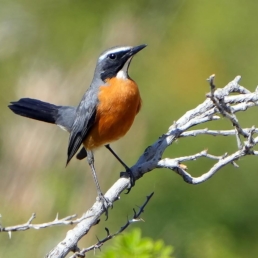
Related tours
From Altai Snowcocks to Mongolian Ground-Jays
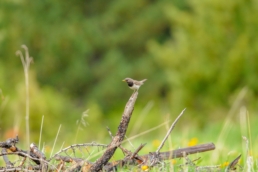
Birding the Far East
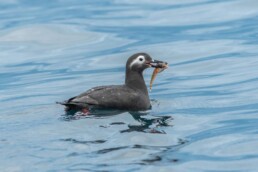
Ornithological expedition to Lake Baikal
